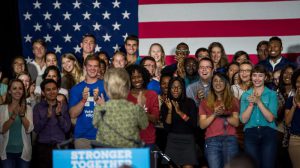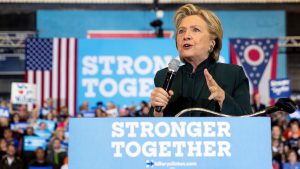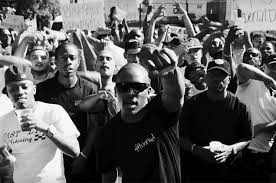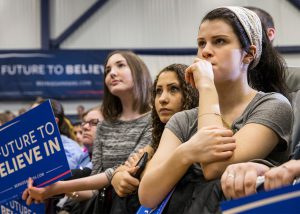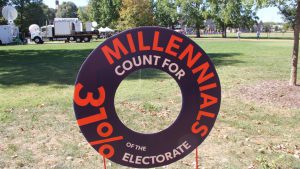*Editor’s note: I wrote this piece before the election took place, so I apologize if the rhetoric is not indicative to the post-election outcome.*
The massive surge of millennial support created by Bernie Sanders should have proved to be a harbinger for both candidates; young voters are ready for a more progressive political agenda. Millennials have been very active in their support of governmental responsibility to provide insurance, per PewResearchCenter. Also, young voters have put emphasis on providing more financial support towards today’s youth, for greater social mobility and direct profit.
Why do these issues coalesce nicely with Hillary Clinton? On Clinton’s main website, she has, “… a comprehensive plan to put higher education within reach for all Americans, and take on the crisis of student debt.” Her promise to invest large amounts of federal funding to alleviate the burden of tuition falls in line perfectly with millennials demands for financial investment. https://www.facebook.com/hillaryclinton/videos/1084864358236759/ (*video for college affordability). In terms of insurance, Clinton’s continuation of the Affordable Health Care Act is the most blatant example of universal insurance coverage for all Americans. https://youtu.be/jXE1Ik3oSMc (Hillary Clinton Health Care video).
Two of these major platforms, among other issues, has Clinton holding a 49 to 21 percent among voters under 30, per Harvard University Institute of Politics. While young voters advocate a more progressive platform, she has tended to struggle with undecided voters due to her “far left wing” approach on multiple social issues (gay marriage, abortion). In fact, undecided/independent voters have grown from a margin of 9 percent in 2012 to a more substantial number of 30 percent.
While not as progressive as Bernie Sanders, Hillary Clinton’s political platform caters to a young generation eager for governmental involvement and expansion. With more young, college educated women trending towards a democratic candidate, it would seem to place Hillary Clinton in a very nice spot with many millennials come Election Day.

